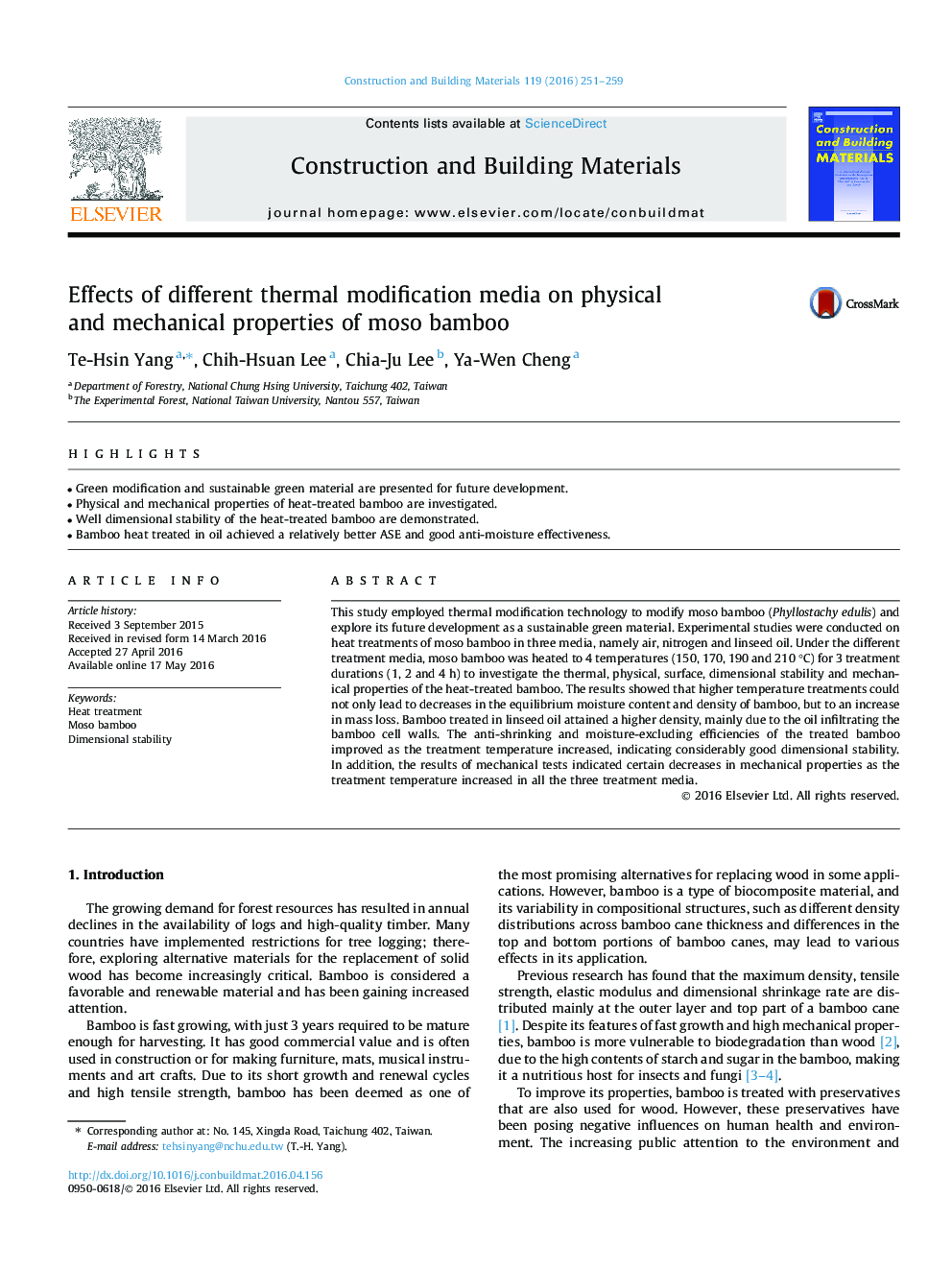| Article ID | Journal | Published Year | Pages | File Type |
|---|---|---|---|---|
| 255937 | Construction and Building Materials | 2016 | 9 Pages |
•Green modification and sustainable green material are presented for future development.•Physical and mechanical properties of heat-treated bamboo are investigated.•Well dimensional stability of the heat-treated bamboo are demonstrated.•Bamboo heat treated in oil achieved a relatively better ASE and good anti-moisture effectiveness.
This study employed thermal modification technology to modify moso bamboo (Phyllostachy edulis) and explore its future development as a sustainable green material. Experimental studies were conducted on heat treatments of moso bamboo in three media, namely air, nitrogen and linseed oil. Under the different treatment media, moso bamboo was heated to 4 temperatures (150, 170, 190 and 210 °C) for 3 treatment durations (1, 2 and 4 h) to investigate the thermal, physical, surface, dimensional stability and mechanical properties of the heat-treated bamboo. The results showed that higher temperature treatments could not only lead to decreases in the equilibrium moisture content and density of bamboo, but to an increase in mass loss. Bamboo treated in linseed oil attained a higher density, mainly due to the oil infiltrating the bamboo cell walls. The anti-shrinking and moisture-excluding efficiencies of the treated bamboo improved as the treatment temperature increased, indicating considerably good dimensional stability. In addition, the results of mechanical tests indicated certain decreases in mechanical properties as the treatment temperature increased in all the three treatment media.
